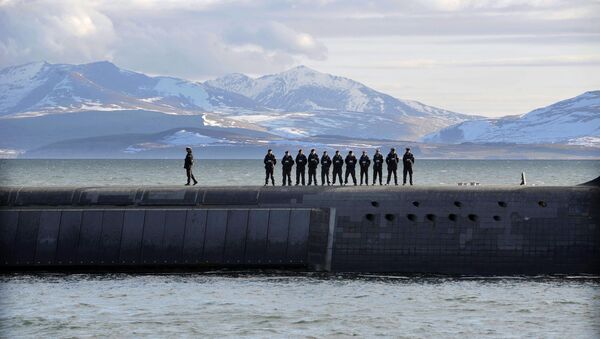Britain is hoping for generous financial assistance from the United States for its plans to upgrade the warheads for its Trident missiles, The Guardian has reported, citing a letter reportedly sent by British Defence Secretary Ben Wallace to US lawmakers in April.
“These are challenging times, but it is crucial that we demonstrate transatlantic unity and solidarity in this difficult period,” Wallace was quoted as saying, with the letter addressed to members of the US House and Senate Armed Services Committees.
“Congressional funding in [2021] for the W93 program will ensure that we continue to deepen the unique nuclear relationship between our two countries, enabling the United Kingdom to provide safe and assured continuous-at-sea deterrence for decades to come,” the secretary added, presumably referring to the 2021 National Defence Authorization Act, which was passed by both houses of Congress last month.
Wallace emphasized that US support for the W93 program in the current budget would be "critical" for allowing the UK to upgrade its Trident warheads, ensuring "the long-term viability of the UK’s nuclear deterrent and therefore, the future of NATO as a nuclear alliance.”
Britain’s submarine-based Trident missile system, carried aboard four nuclear subs armed with eight missiles apiece and operating out of the Clyde Naval Base in Scotland, was approved for acquisition in 1980, with patrols of the subs beginning in the mid-1990s. After the decommissioning of Britain’s tactical WE.177 free-fall bombs in the late 1990s, the system became the keystone of the UK’s nuclear deterrent.
In February, the Pentagon accidentally leaked details on a British plan to buy a new generation of nuclear warheads for the system. US lawmakers had been wrangling with the spending proposal in recent months, with its opponents pointing out that the Pentagon already has two other viable warheads, the upgraded W76 and W88, for its own submarine-launched Trident missiles.
US officials were reportedly surprised by Foreign Secretary Wallace's unusually blunt intervention in the spending debate, with a committee aid telling The Guardian that “we’ve never had a letter of this sort before.”
The UK’s W76s have varying blast yields, ranging from 0.3 kilotons to 100 kilotons. The US version of the warhead has been upgraded, and is expected to be viable until at least 2045, while the UK’s is expected to need upgrade or replacement by the late 2030s.
The United States is in the middle of a 30-year, $1.5 trillion program to upgrade its nuclear arsenal, with the program begun in 2010, and the Trump administration adding several new expenditures for the creation of new tactical and sea-launched weapons.
The Pentagon estimates that Russia, the world’s other nuclear superpower, has spent the equivalent of $28 billion upgrading its nuclear triad in recent years (i.e. over 50 times less than the US, and even less than the UK expects to spend upgrading Trident). In March, Russian Defence Minister Sergei Shoigu announced that Russia’s nuclear arsenal would be 87 percent modernized by the end of 2020.




